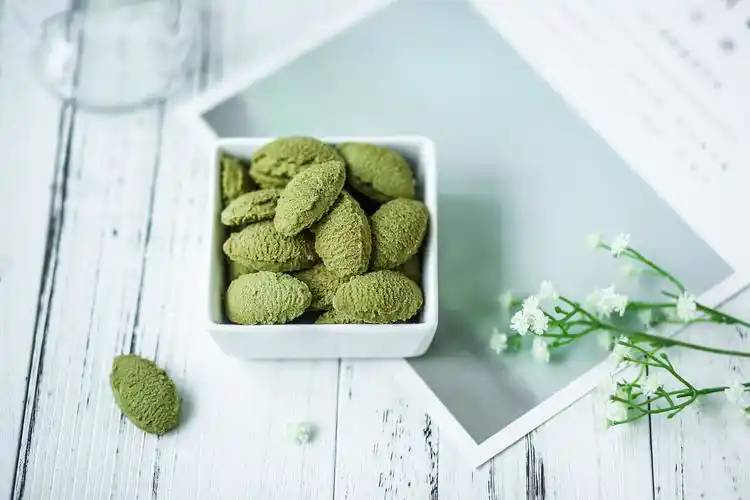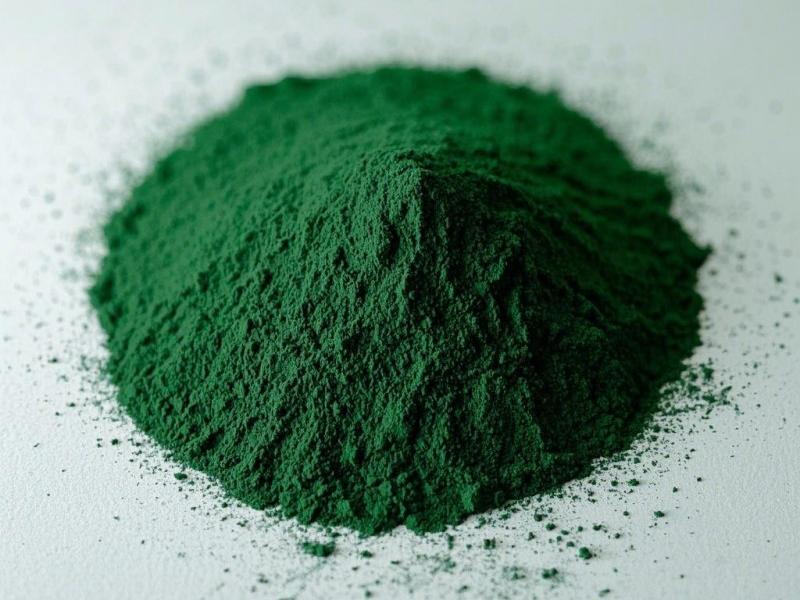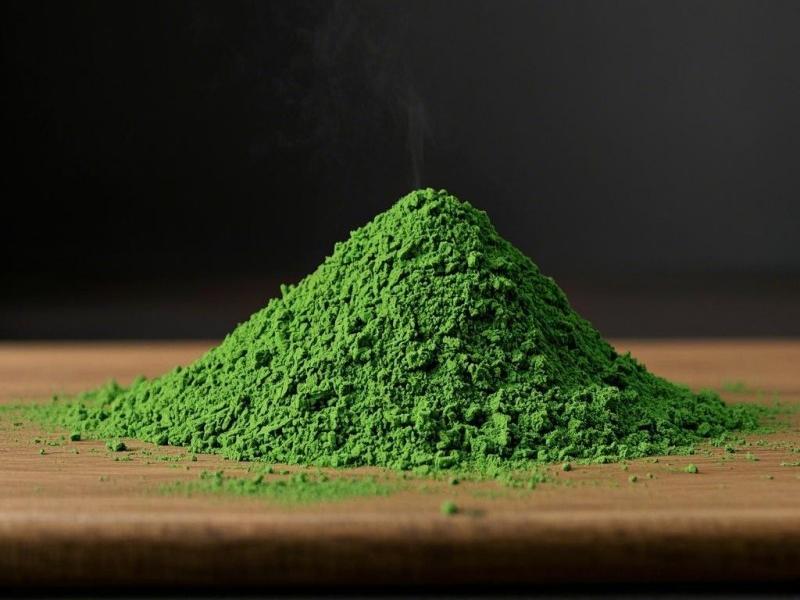Is Spirulina Good for Diabetes?
Spirulina is a blue-green algae belonging to the Cyanobacteria phylum that grows naturally in high-salt lakes in the subtropical and tropical regions of America, Mexico, Asia and Central Africa. Spirulina is already considered a healthy food by consumers [1]. As a low-level prokaryotic single-celled or multicellular aquatic organism, it is widely praised for its extremely rich nutritional content and has been dubbed a “superfood”. In addition, a moderate intake of spirulina can provide the general population with a sufficient supply of B vitamins, especially vitamin B12. Spirulina polysaccharides in particular have shown potential in supporting the treatment of metabolic diseases, enhancing free radical scavenging capacity, and regulating blood sugar and lipid levels [2].
Spirulina also synthesizes a large amount of phycobiliproteins. Currently, spirulina is widely used as a natural source of pigments in many fields, such as food and cosmetics. In addition, it also shows great application potential in the fields of medical treatment and bioengineering, and is used to make fluorescent reagents. Spirulina can also be made into specific types of food to meet market demand, showing good prospects for development and utilization. Globally, especially in developed countries such as the United States, Germany, and France, spirulina-related products are widely integrated into all aspects of daily life, serving consumers in the form of sports drinks and beauty cosmetics [3]. This article comprehensively summarizes the nutritional composition and biological activity of spirulina, providing a reference for the development and utilization of spirulina.
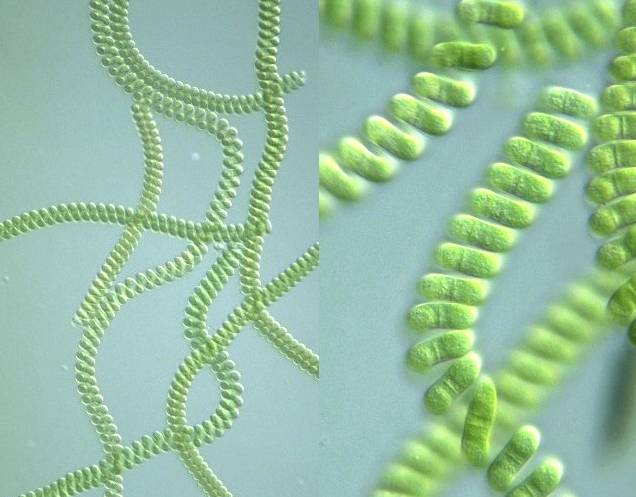
1 Nutritional composition of spirulina
1.1 Spirulina polysaccharides
Algal polysaccharides are polymers formed by the connection of multiple different or identical monosaccharide molecules through glycosidic bonds, and are usually water-soluble. Sun Jianguang et al. [4] isolated and purified crude spirulina polysaccharides and determined their physicochemical properties. Spirulina polysaccharide is a water-soluble intracellular polysaccharide with a molecular weight of 12,590. It is composed of D-mannose, D-glucose, D-galactose and glucuronic acid, with relative contents of 30.9%, 29.8%, 22.7% and 16.5%, respectively. Infrared spectroscopy and nuclear magnetic resonance spectroscopy analysis show that the glycosidic bond in its molecular structure is of the α type.
1.2 Proteins and amino acids
The main nutrient in spirulina is protein, which accounts for 60% to 70% of its dry weight. This content is about 1.7 times that of soybeans, 9.3 times that of corn, 3.5 times that of beef, and 4.6 times that of eggs. Spirulina is rich in amino acids, especially glutamic acid, and contains essential amino acids that meet or exceed the recommended intake set by the Food and Agriculture Organization of the United Nations (FAO) [5]. Spirulina protein is not only of high quality, but also highly water-soluble, easily digested, and has a digestion coefficient of 95% and an absorption rate of 75% [6].
1.3 Vitamins and minerals
Spirulina contains more than 13 types of vitamins, including those that support growth and development, such as vitamin B1, vitamin B2, vitamin B12 and vitamin E. Notably, the content of beta-carotene in 100 g of spirulina is as high as 50 mg, which is significantly higher than that of other plants and 15 times that of carrots [7]. Spirulina is rich in minerals, with more than 50 types of elements, and is rich in iodine, potassium and sodium. Spirulina also contains high levels of zinc, manganese and many other trace elements [8].
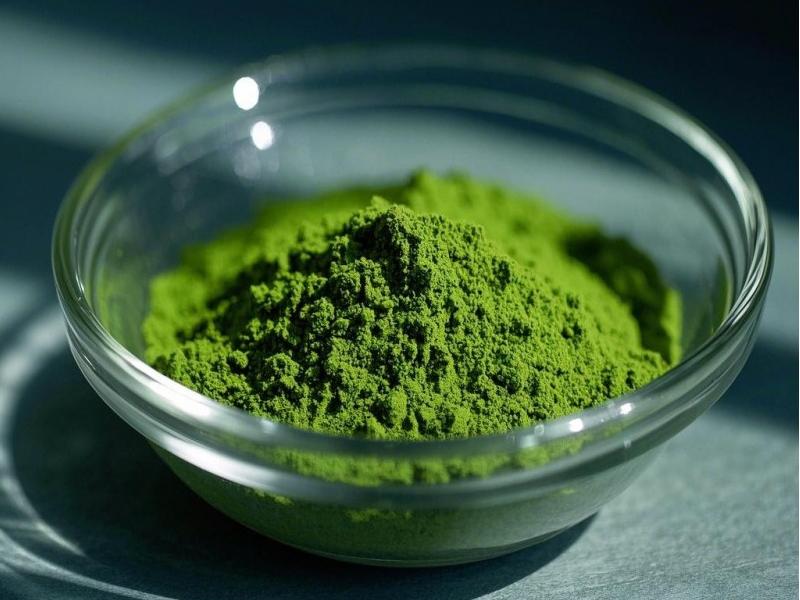
2 The biological activity of spirulina
2.1 Immune system
Spirulina is extremely rich in micronutrients, many of which have unique biological activity. They can effectively remove free radicals in the body, thereby reducing damage to cell tissue, enhancing the body's immune system, and preventing many diseases. Spirulina polysaccharides are one of these. In recent years, academic discussions and research on the immunomodulatory effects of spirulina polysaccharides have increased significantly. According to a study by Weijinhe et al. [9], spirulina polysaccharides exhibit significant immunomodulatory effects in a mouse model. Specifically, spirulina polysaccharides can effectively enhance the delayed hypersensitivity reaction caused by dinitrofluorobenzene, while also improving the function of the mouse immune system, as indicated by an increase in the thymus index, an increase in the serum hemolytic value, and an increase in the phagocytic activity of mononuclear-macrophages. More notably, these positive immune effects showed a direct positive correlation with the dose of spirulina polysaccharide used, i.e., the higher the dose, the more pronounced the immune enhancement effect. This finding not only reveals the potential of spirulina polysaccharide in immune system regulation, but also provides a scientific basis for its application in the prevention and treatment of related immune diseases.
Lü Xiaohua et al. [10] believe that spirulina polysaccharides have a strengthening effect and can effectively improve the immune system function of mice whose immunity has declined due to treatment with cyclophosphamide. Chang Jingyao et al. [11] systematically investigated the regulatory effect of spirulina polysaccharides on 24 cytokines in mouse serum through three different administration methods. The study found that the use of spirulina polysaccharides significantly promoted the overall immune function of mice. Chen Wenqing et al. [12] showed that spirulina polysaccharides have the effect of promoting lymphocyte proliferation in mice and can exert a positive effect in immune regulation by inducing IFN-γ.
Spirulina polysaccharides are mainly composed of glucose and rhamnose. AFZALI et al. [13] used high performance liquid chromatography, infrared spectroscopy and nuclear magnetic resonance to distill and purify crude polysaccharides from spirulina, thereby isolating two polysaccharide components, spirulina polysaccharide-1 and spirulina polysaccharide-2, which were both identified as branched glucans. These polysaccharides can significantly enhance the body's defence against viral and bacterial invasions. In addition, spirulina polysaccharides can significantly enhance the phagocytic ability of macrophages, while promoting the production of nitric oxide (NO) and the expression of related cytokines, and promoting the release of NO by these cells. NO plays a central role in the body's response to environmental changes, not only enhancing the immune system's defence capabilities, but also reducing the damage caused by excessive immune responses [14].
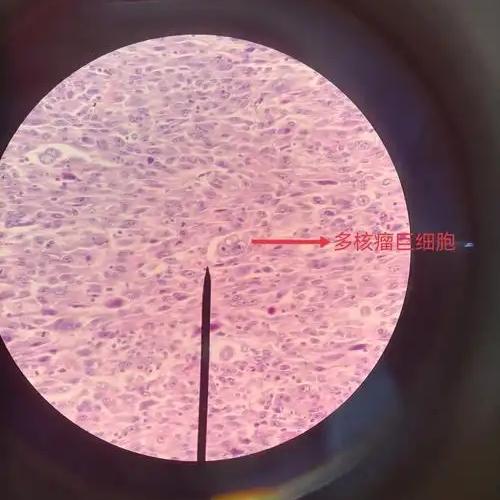
2.2 Antioxidant
Spirulina is rich in phycocyanin, naturally occurring antioxidants such as beta-carotene, vitamins and minerals, and has been shown to have significant antioxidant effects. These compounds can effectively neutralize excess free radicals, prevent DNA damage, and enhance the activity of superoxide dismutase and catalase, significantly reducing the frequency of oxidative stress events. This effectively reduces the damage caused to cells by free radicals, maintains a harmonious state between cells and their external environment, and ensures the smooth progress of the cell's metabolic processes [15].
Luo Aiguo et al. [16] successfully extracted proteins from Spirulina platensis and evaluated their effectiveness in scavenging free radicals. The data showed that when the intake of Spirulina proteins reached a specific threshold, they exhibited antioxidant properties comparable to vitamin C. In addition to the direct evaluation of the antioxidant properties of Spirulina, HASSANZADEH et al. [17] explored the value of spirulina in the optimization of innovative functional juice formulations. Wheat germ powder and spirulina were used as formulation synergists. It was found that when the addition ratio of spirulina and wheat germ was 1%, the antioxidant capacity of the functional beverage increased to 98%, and it also achieved the highest score in the sensory evaluation.
Li Ling et al. [18-19] found that spirulina and its polysaccharides can effectively scavenge hydroxyl radicals (·OH) and superoxide anions (·O2-), which are two types of reactive oxygen species that play an important role in cell damage. By scavenging these free radicals, spirulina and its polysaccharides can significantly inhibit lipid peroxidation and oxidative damage to DNA. In addition, spirulina polysaccharides have a particularly strong antioxidant effect, which is better than that of spirulina itself. This shows that the polysaccharides in spirulina are an important component of its antioxidant activity, and that spirulina also contains other ingredients with antioxidant effects, such as vitamins and phycocyanin. Studies have shown that spirulina not only has a strong ability to scavenge free radicals, but also provides long-lasting antioxidant protection.
2.3 Hypoglycemic
Spirulina polysaccharides are natural ingredients in spirulina that exhibit a diverse range of biological activities. Spirulina polysaccharides are involved in the regulation of many life processes in cells and exhibit a significant blood glucose-lowering effect. MA et al. [20] used response surface methodology to study the extraction and purification of β-carotene and spirulina polysaccharides from spirulina, and also evaluated their in vitro antioxidant activity and blood glucose-lowering effect in diabetic mouse models. The results showed that β-carotene extracted from spirulina has significant antioxidant capacity and also exhibits strong inhibitory effects against lipid peroxidation. In addition, in diabetic model mice, after 10 days of administration, the blood glucose level of the mice decreased significantly, from (15.81±1.71) mmol·L-1 to (8.10±0.88) mmol·L-1, and the food and water intake also improved significantly. Qi Qinghua [21] extracted polysaccharides and proteins from spirulina using hydrochloric acid precipitation. in the treatment of high blood sugar in experimental rats with diabetes induced by alloxan, it showed a significant blood sugar regulating effect, which shows that it has certain potential in the development of functional foods and has certain application value in the prevention and treatment of diabetes. ABOUZID et al. [22] conducted a comparative study on the anti-hyperglycemic effects of several Egyptian plants and spirulina. The results showed that spirulina exhibited the most significant anti-hyperglycemic activity.
The mechanism by which spirulina regulates glucose metabolism may involve the dual action of the abundant proteins and cellulose in spirulina, which help to slow the rise in blood sugar and promote insulin production. Spirulina's effect of improving insulin sensitivity may be related to its ability to reduce the level of interleukin-6 (IL-6). This mechanism helps to maintain the normal functioning of the insulin signaling pathway, especially the function of the insulin receptor substrate. If IL-6 levels are too high, they may affect the activity of insulin receptor substrates, thereby hindering the transport of glucose transporter 4 (GLUT4) to the cell membrane, resulting in a decrease in the efficiency of glucose uptake by muscle and adipose tissue. Spirulina may therefore help to improve glucose metabolism and insulin sensitivity by regulating IL-6 levels [23].
Wang Suyi et al. [24] conducted an in-depth study on diabetic rats. In a rat model of diabetes induced by streptozotocin (STZ), an increase in the production of the peroxidation product malondialdehyde (MDA) was observed, while the activity of the antioxidant enzyme superoxide dismutase (SOD) decreased significantly. This series of changes directly led to a decrease in insulin secretion and an increase in blood glucose levels. It can be inferred that a decrease in antioxidant capacity is one of the key factors in the development of diabetes. Treatment with spirulina polysaccharides significantly reduced serum MDA levels and significantly increased SOD activity, indicating that the mechanism of action of spirulina polysaccharides is to enhance the activity of antioxidant enzymes, promote the removal of free radicals, reduce the damage of free radicals to islet cells, and thereby promote the production and release of insulin, thus exhibiting its hypoglycemic effect.
2.4 Lowering blood lipids
Spirulina contains linolenic acid, which has the ability to inhibit the accumulation of cholesterol and triglycerides in the liver and arteries, and can lower the concentration of cholesterol in the blood, thereby preventing hyperlipidemia. Yu et al. [25] found that spirulina can significantly lower blood lipids by feeding spirulina to mice with hyperlipidemia, and it can effectively reduce the cholesterol content in the body of experimental animals. Spirulina's fat-soluble components have a significant effect in reducing the activity of 3-hydroxy-3-methylglutaryl coenzyme A reductase (3-Hydroxy-3-Methyl Glutaryl Coenzyme A Reductase, HMGR) in HepG2 cells. This enzyme is a key enzyme in the cholesterol synthesis process. Spirulina inhibits cholesterol synthesis by reducing the expression of HMGR, the key enzyme in cholesterol synthesis. In addition, it can significantly reduce blood lipids by inhibiting the function of Low-Density Lipoprotein receptors (LDLR) and genes related to fat accumulation, including fatty acid synthase and stearoyl-CoA desaturase 1 [26].
2.5 Anti-cancer and anti-tumor
Spirulina polysaccharides not only inhibit the proliferation cycle of tumor cells and promote apoptosis, but also enhance the body's immune function and improve the individual's defense against tumors. Phycocyanin, on the other hand, accelerates the apoptosis process of tumor cells by regulating the expression of apoptosis-related genes and inhibiting the expression of apoptosis-inhibiting genes. In addition, it can significantly enhance the effectiveness of the immune system [27]. Du Ling et al. [28] explored the efficacy and development prospects of the application of African Lake Chad Spirulina platensis polysaccharides in the field of tumor therapy through ascites tumor mice.
The study showed that Spirulina platensis polysaccharides exhibited excellent antitumor function, could improve the survival rate of mice carrying ascites tumors, and effectively inhibit the expansion of tumor cells. At the same time, compared with the control group, the mice in the experimental group showed significant superiority in various physiological indicators. In addition, the study also pointed out that the anti-tumor effect of spirulina polysaccharides shows a certain dose-response characteristic, that is, as the concentration of polysaccharides increases, the effect becomes more pronounced. Wang Q et al. [29] revealed through research that spirulina polysaccharides can effectively inhibit the growth and spread of colon adenocarcinoma, and that a concentration of 5.0 mg·mL-1 can significantly inhibit tumor cells. In addition, they speculated that the antitumor effect of spirulina polysaccharides may be achieved by directly inhibiting the growth of tumor cells and enhancing the body's immune function.
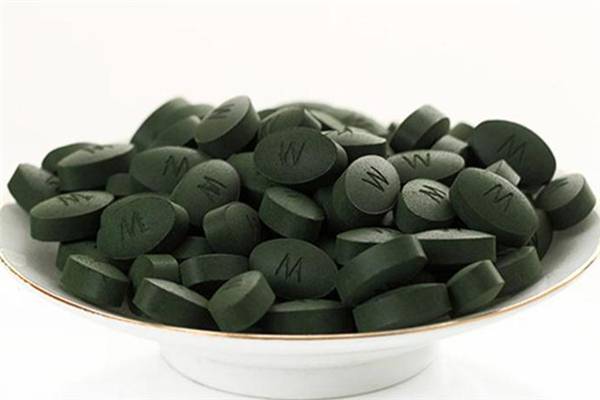
3 Conclusion and outlook
Spirulina is an ideal low-fat, low-calorie, cholesterol-free source of high-quality protein because of its comprehensive nutritional value and safety and reliability. It also has the effect of strengthening the immune system, resisting viral invasion, and anti-oxidation, and it also has a positive effect on adjuvant therapy for diseases [30-31]. Globally, spirulina is widely recommended and used as a food supplement because of its natural properties. With the development of society and the improvement of people's quality of life, as well as consumers' deepening understanding of food nutrition and the progress of medical technology, daily foods based on spirulina will continue to emerge. At present, the application and development of spirulina at home and abroad mainly focuses on industries such as nutritional supplements, health drugs, beauty products and high-end pet feed. Future research efforts should be devoted to exploring the under-exploited functional ingredients in spirulina in order to expand its potential value of use.
References
[1] SHIOJI Y, KOBAYASHI T, YOSHIDA T, et al. Nitrogen balance and bioavailability of amino acids in spirulina diet-fed wistar rats [J]. Journal of Agricultural and Food Chemistry, 2021, 69(46): 13780-13786.
[2] TAN K C, PHAM T X, LEE Y, et al. Identification of apocarotenoids as chemical markers of in vitro anti-inflammatory activity for spirulina supplements [J]. Journal of Agricultural and Food Chemistry, 2021, 69(43): 12674-12685.
[3] Yan Zhi, Zhu Jiangyu, Ni Siyan. Research on the production process of spirulina compound jam [J]. Jiangsu Condiment and Non-staple Food, 2024(1):18-21.
[4] Sun Jianguang, Xie Yingxian, Chen Wanhua. The composition and function of spirulina polysaccharides and the factors affecting the production of algal polysaccharides [J]. Marine Science, 1998(3): 14-15.
[5] Yu Jie. Optimization of spirulina proteolysis process and isolation and identification of antioxidant peptides [D]. Wuhan: Huazhong Agricultural University, 2015.
[6] Wu J. Nutritional and health benefits of spirulina and its application in preventive medicine [J]. China Health Industry, 2017, 14(15): 18-19.
[7] Zheng GQ. Research on the GC-MS detection method of fatty acids in spirulina [D]. Tianjin: Tianjin University of Science and Technology, 2010.
[8] Zhang Mingfeng. Research and application of spirulina [J]. Feed Industry, 1997(6): 25-26.
[9] Wei Jinhe, Yu Lijun, Tang Yubang, et al. 2009. The effect of spirulina polysaccharide on regulating immune function in mice [J]. Journal of Jiangsu Agricultural Sciences ,2009,25(6): 1351-1353.
[10] Lv Xiaohua , Chen Ke , Chen Wenqing , et al. Immunomodulatory effect of spirulina polysaccharide on immunocompromised mice [J]. Chinese Journal of Hospital Pharmacy ,2014,34(19):1617-1621.
[11] Chang Jingyao, Pang Guangchang, Li Yang. Immunomodulatory effect of spirulina polysaccharide on mice through the abdominal cavity mucosa [J]. Food Science, 2010, 31(17): 281-285.
[12] Chen Wenqing, Lv Shijing, He De. The immunomodulatory effect of spirulina polysaccharide on lymphocyte proliferation and the promotion of IFN-γ induction in immunocompromised mice [J]. Shizhen National Medicine, 2008(4):941-942.
[13] AFZALI M, SHANDIZ S A S, KESHTMAND Z. Preparation of biogenic silver chloride nanoparticles from microalgae Spirulina platensis extract: anticancer properties in MDA-MB231 breast cancer cells [J]. Molecular Biology Reports, 2024, 51(1): 62.
[14] ZHAO Yue, WANG Xiao, MA Xiaotong, et al. Research progress of spirulina [J]. Journal of Inner Mongolia Agricultural University (Natural Science Edition), 2023, 44(6): 94-100.
[15] Guo Fenfen, Fan Jian, Qu Yuewen, et al. Research progress of antioxidant and anti-aging effects of spirulina [J]. Science and Technology Information (Science Teaching and Research), 2008(5): 16.
[16] LUO Aiguo, DONG Hongping, MA Jianhua, et al. In vitro antioxidant capacity of spirulina platensis protein [J]. Feed Research, 2020, 43(5): 58-61.
[17] HASSANZADEH H, GHANBARZADEH B, GALALI Y, et al. The physicochemical properties of the spirulina-wheat germ-enriched high-protein functional beverage based on pear-cantaloupe juice [J]. Food Science & Nutrition, 2022, 10(11):3651-3661.
[18] Li L, Gao Y, Dai Y. Research on the in vitro scavenging of active oxygen and antioxidant effects of spirulina and spirulina polysaccharides [J]. Chemical and Biological Engineering, 2007, 24(3): 55-57.
[19] SHE Q, SHI Z F. Research progress on the antioxidant activity of spirulina [J]. Journal of Guangdong Pharmaceutical College, 2014, 30(2): 249-252.
[20] MA Q Y, FANG M, ZHENG J H, et al. Optimised extraction of β-carotene from Spirulina platensis and hypoglycaemic effect in streptozotocin-induced diabetic mice [J]. Journal of the Science of Food and Agriculture, 2016, 96(5): 1783-1789.
[21] Qi Qinghua. Research on the separation and purification process of spirulina polysaccharide and phycocyanin and the biological activity of polysaccharide [D]. Fuzhou: Fujian Agriculture and Forestry University, 2014.
[22] ABOUZID S F, AHMED O M, AHMED R R, et al. Antihyperglycemic effect of crude extracts of some Egyptian plants and algae [J]. Journal of Medicinal Food, 2014, 17(3): 400-406.
[23] MARCEL A K, EKALI L G, EUGENE S, et al. The effect of Spirulina platensis versus soybean on insulin resistance in HIV-infected patients: a randomized pilot study [J]. Nutrients, 2011, 3(7):712-724.
[24] Wang Suyi, Chang Xueying, Zhao Shuai, et al. Effect of spirulina polysaccharide on blood glucose and antioxidant effects in diabetic rats [J]. Occupational and Health, 2015, 31(23):3229-3231.
[25] Yu J, Dong QY. Research progress on the application of spirulina in feed [J]. Green Technology, 2018(23):51-53.
[26] Wei YL, Jiang GQ, Peng J, et al. Research progress on the nutritional and health functions of spirulina and its application in foods [J]. Food Industry Science and Technology, 2022, 43(8): 406-415.
[27] Zhang Jun, Zou Ning, Sun Donghong, et al. Research progress of antitumor components of spirulina [J]. Food Research and Development, 2016, 37(14): 214-216.
[28] Du L, Hu R, Mu W, et al. Experimental study on the immunological antitumor effect of polysaccharides from Arthrospira platensis on S180 ascites tumor-bearing mice [J]. Natural Product Research and Development, 2014, 26(6):957-960.
[29] Wang Q, Chen S, Li H, et al. Extraction and purification of spirulina polysaccharides and evaluation of their anti-colon adenocarcinoma activity [J]. Food and Machinery, 2016, 32(6): 151-155.
[30] Xin Quanbo, Luo Wei, Sun Kecheng, et al. Effect of protein removal methods on the composition, structural characteristics and in vitro antitumor activity of euglena polysaccharides from Zhanjiang [J]. Journal of Dalian Ocean University, 2019, 34(3): 428-435.
[31] He Shansheng, Wang Li, Li Jian, et al. Research progress of spirulina [J]. Food Industry, 2017, 38(12): 263-268.


 English
English French
French Spanish
Spanish Russian
Russian Korean
Korean Japanese
Japanese